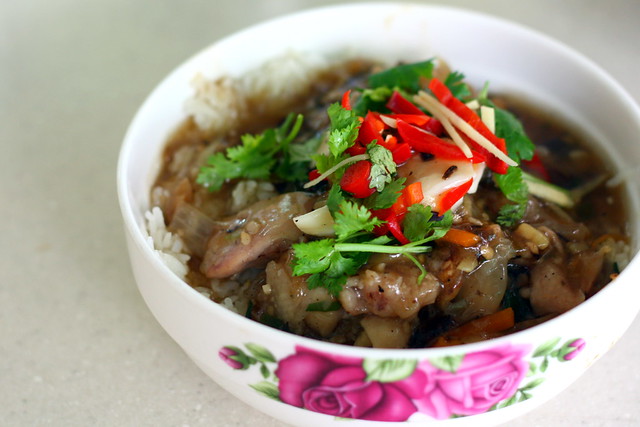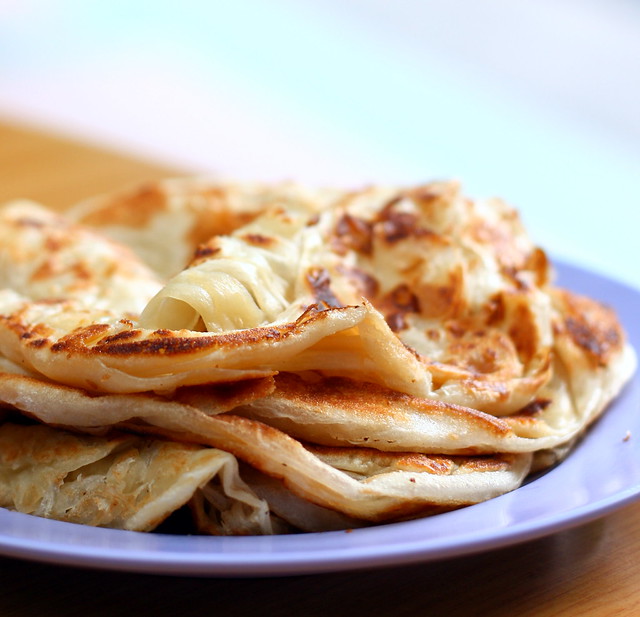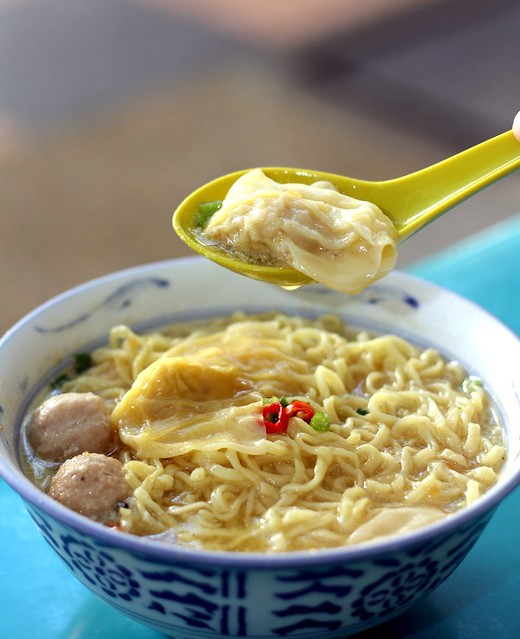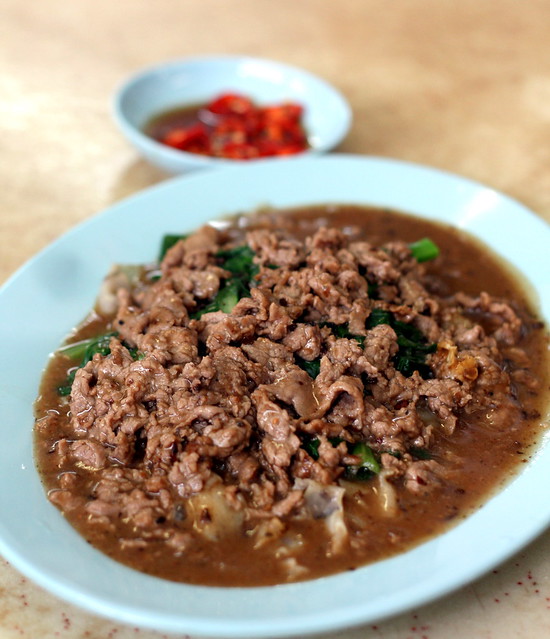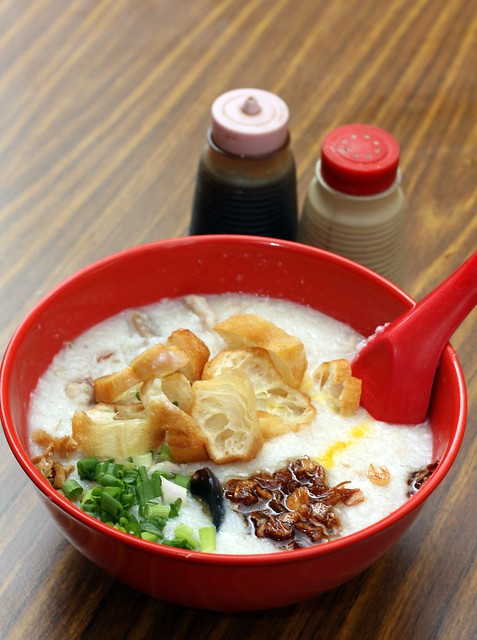I have been doing my
hawker column for a year. When I lug a big camera to hawker centres especially with flash and a big fat lens, I often have to deal with the stares from the neighbourhood aunties and uncles which is really dreadful at times. Besides having to handle them, I have to make sure my hawker dish looks delicious enough. This is a real challenge.
I read a lot about studio photography, or restaurant photography on the net, but I really can’t find one that says “Food Photography in Hawker Centres”. Let’s face it, Singapore has so many hawker centres and we, as locals who came from middle income family will visit our neighbourhood local hawker centres much more frequently than a restaurant. So I decided to do it.
Actually, this has been in my plan for the longest time and this is one of the many reasons why I decided to turn my food blog into an English one. I can’t possibly type photography terms such as 光圈(Aperture)and 快门(Shutter)in Chinese and ask you to read it. Most likely, you will give up and just admire the photos.
A lot of people feel that we can only take excellent photos in restaurant as there are good lightings there. This is not true at all. When we visit hawker centres in the morning with perfect sunlight, the pictures you get are comparable to a restaurant. What’s more, these are the places that sell our favourite local dishes which you can’t get anywhere else in the world. It is our tradition that we must share.
To be frank, I felt that hawker centres are the best place to practise your photography skills. Because the place is always noisy, besides having to think about how to shoot the photos, you also have to take the surroundings into consideration.
Here I present to you my first food photography post on: How to shoot photos in hawker centres. Before I begin, please understand that I am not a professional food photographer. I am still learning day by day and these are just some of the tips I gathered based on my experience. I welcome ideas from you too.
_____________________________________________________________________________________
1. Use Natural Lighting
_____________________________________________________________________________________
This is the most common tip given by any photographers but hey, this is THE MOST IMPORTANT tip you take home today. Many of you would have already heard this but are you really doing it?
I don’t want to complicate things. In hawker centres, if you don’t want additional stares, keep away your flash, tripod, softbox, big lens whatever. You are not trying to take professional studio shots there. You just want to take clear and bright photos.
Shoot in the morning and when there is still bright daylight. Light direction is probably the biggest factor of whether a food photo is successful or not. Don’t hide in the middle of a hawker centre where you get the most minimal light. Try to sit near the entrance where there are natural lighting. Even if you are seated in a position where your photos turn out dark, please, NEVER POP UP YOUR FLASH. The flash in your camera is too harsh and it flattens everything, creating unappealing shiny spots.
For beginners, walk around the table and take different shots. Find the spot where your photos is the clearest and brightest. Then stay at that spot and work your composition from there. After a while, you will know which position is best.
When you must shoot at night, try avoid using flash directly on the food as it’s too harsh. Instead, use a flash diffuser or have the flash bounce off a ceiling or wall. If you can’t find any of those, stop shooting and just enjoy the food.
Remember: NEVER use flash
_____________________________________________________________________________________
The Process
_____________________________________________________________________________________
The best thing about shooting in hawker centre (which you can’t find in restaurants) is to shoot the process. Sometimes, shooting the preparation process is more interesting than the final product.
Just be polite to ask the hawker owners for permission. They are all very friendly people and they will be happy that you are appreciating their food.
_____________________________________________________________________________________
Composition
_____________________________________________________________________________________
I will touch on composition thoroughly next time, but for now, make your photos appealing by shooting from different angles. Don’t shoot as what is given. Add some fork and spoon to ‘style’ it or take something from the dish which you think is important, aim ur focus point at that particular ingredient.
Instead of only taking photos of a full plate of food, place your food off centre or even try taking macro shots. Getting up close to your subject will bring out the textures and finer details, making it more interesting and intriguing.
As with anything, you shouldn’t just take something for its face value. With food, sometimes it’s what’s inside that can create a great shot. So cut it, slice it or dice it! Cut up crumbed foods for the contrasting textures or cut cakes just so I can get the different layers.
Sometimes, more is better than less. If you want to shoot prata, get more friends to join you, so that you are able to stack all the pratas together and shoot the interesting layers. Similarly, it looks rather boring to shoot one muffin. Get more!
_____________________________________________________________________________________
The Settings
_____________________________________________________________________________________
Depth of Field means how much of the photo is in focus and how much of it gets blurred. DSLRs and some of the latest digital cameras in the market allows you to choose these settings in your camera.
There is no right or wrong with regards to how big/small has got to be. I like shallow depth of field (i.e. bokeh), which means the subject will be in focus, the background will be blurred and you will need to choose a large aperture, like F2.8 to achieve such effects. This technique is very useful for food photography and for taking portraits.
In my opinion, shutter speed doesn’t matter so much in food photography. It is your aperture that is the most important. If you can, shoot manually. If not, turn your camera to “Aperture Priority” mode, you only have to deal with your aperture while the computer configures the shutter speed accordingly.
I believe a good lens is important in food photography. I have been using Canon 50mm F1.8 for the longest time and it has never failed me. It is good and cheap, and has been used by many food photographers worldwide. Having a macro lens is a plus point but not necessary, if you have extra cash, go for a light macro lens, i.e. 60mm. For a lady, I don’t want to be holding a heavy lens to shoot food. I think my shots will be blurred.
If you are sticking with the point-and-shoots, just make sure it has a good macro mode on it. Forget about taking photos in low light unless you don’t mind grainy pictures. Many compact cameras nowadays allows you to shoot in manual mode, get one with a shallow depth of field, it will make your photos more attractive.
_____________________________________________________________________________________
Talk to the hawkers
_____________________________________________________________________________________
Talk to the hawkers and understand how did they cook the dish. (Don’t do it during peak hours of course!) Trust me, you will appreciate the dish much better.
Ask things like:
1. How long have you been doing this?
2. Where do you learn this dish from?
3. Which is the most difficult ingredients to prepare?
4. What is added into the soup/dish?
5. What do you have to take note which preparing it?
and the list goes on.
The hawkers are very friendly bunch of people. They wake up very early in the morning to buy the freshest ingredients and prepare their dishes. When you talk to them, you will know how is each dish cooked and you will shoot much better.
For instance, in a bowl of fishball noodles. If the hawker tells you that they make their own fishballs fresh every morning 4am, while shooting the bowl of noodles, focus on the fishballs. Similarly, if you heard that their mee pok is specially made in the factory, focus on the noodles.
Note: Please don’t take a finished shot of your plate of food. It’s totally meaningless and not candy to the eye.
_____________________________________________________________________________________
With that, I conclude my first Photography Guide in Hawker Centres. Just keep practising and you will get better. If you have any good tips, feel free to share with me and I will add them in!
